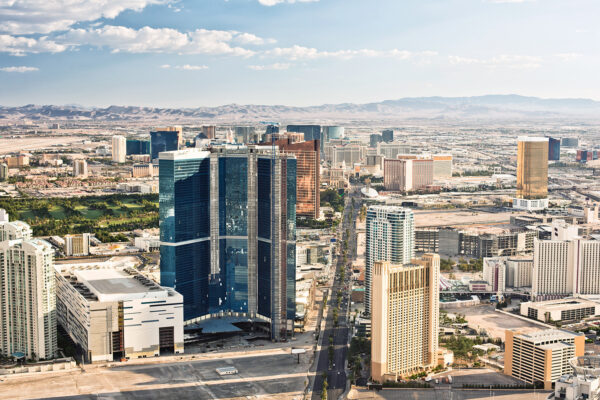
Often forgotten amid the larger, classic swing states like Florida, Pennsylvania and Ohio, the American West is finding itself in a new position of prominence in the 2012 election and will likely retain that prominence as the country’s demographics shift in the Democrats’ favor over the coming years.
With the Midwest probably in President Barack Obama’s column and the entirety of the South probably in Republican candidate Mitt Romney’s (with the possible exception of Virginia), Tuesday’s election may come down to three states in the Rocky Mountains that all went for Obama in 2008, George W. Bush in 2004 and split between Bush and Al Gore in 2000.
The region was uncompetitive for Democrats in 2000, with the exception of New Mexico which Al Gore won by a mere five hundred votes that year. In 2004, the region was one of John Kerry’s many “backup” paths to victory (besides Florida and Ohio) that didn’t pan out. In 2008’s election between Obama and John McCain, it didn’t make the difference — preelection polls weren’t close and the election was effectively decided well before results came in from the West.
What will happen this time around? Recent history might offer a clue as to what we can expect — history as recent as the 2010 congressional elections.
We can start in Colorado and Nevada, states in which the same factors are at play between them. In 2010, the Tea Party wave didn’t wash over the West as solidly as it did other states. In some cases, this was a stunning surprise. In Nevada, the Democratic majority leader in the Senate Harry Reid was expected to lose to Republican Sharron Angle but instead pulled off a six-point victory.
The reason was probably twofold. First, the Democratic turnout machine that Reid and his allies had built up in Nevada over three decades proved to be more powerful than the polls had accounted for. Second, there is evidence that the polls have been routinely undercounting Latinos since none of the major pollsters conduct surveys in Spanish.
The same factors should help President Obama in Nevada this year. Unlike Reid in 2010, he already has a significant advantage in the polls.
Colorado will be tougher for Democrats to win than Nevada but the same Hispanic polling issue applies there. Democrats can also expect increased youth turnout because of a high-profile marijuana legalization measure on the ballot that is sure to bring more young residents of the state to the polls.
And like Nevada, Colorado was another state that “should” have gone Republican but bucked the trend. When Republicans nominated, as they did in races across the country, a tea partier to challenge replacement appointee Michael Bennet, it seemed a likely pickup. But as in Nevada, the polls underestimated Democratic support. Several points down in the polls on election day, Bennet eked out a two-point victory and held on to his seat.
It’s worth mentioning that these upsets in the Democrats’ favor did not happen across the country, further suggesting that the polls have yet to adapt to the Hispanic element of the electorate.
One advantage for Republicans in each of these elections: Both of the losing 2010 Senate candidates were far-right Tea Party ideologues. Mitt Romney can effectively appear as though he isn’t. One disadvantage: This isn’t a Republican wave election.
Looking closer to the border, it’s clear that even in a wave election, New Mexico wouldn’t be a swing state. It’s also a good example of a state where the issues are trumping ground game. Playing in Obama’s favor is that 39 percent of New Mexican voters is Hispanic — a significantly higher share of the electorate than Colorado’s 14 percent and Nevada’s 15.
The only real advantage that Mitt Romney has in New Mexico is a significant number of workers in the defense industry. But even if they go solidly for the former Massachusetts governor, it won’t make up for an enormous gap statewide. Tellingly, Romney has never led in a poll in New Mexico.
The state, more than any other, is an example of the effect that Republicans’ rightward turn on immigration policy has had on Latino voters and therefore the electoral map. Republicans will have to moderate their positions on immigration in order to become competitive in the state again as well as to prevent Arizona and Texas from becoming battleground states.
In particular, Arizona’s draconian response to illegal immigration has arguably awakened the state’s Hispanic community. It will be too late for any Democratic windfall at the polls this year but the future bodes ill.
To cancel out this trend, Republicans have tried to enact strict voter identification laws in some states. But Colorado, New Mexico and Nevada have no such law this year, meaning that Democratic turnout won’t be dampened as compared to previous elections. (Colorado does require identification although without a photo and the law dates back to 2003.)
There does appear to be some hope that the Mormon electorate could be a heretofore untapped reserve of Republican voters but that is highly unlikely to be the case. Mormons already have high turnout and vote overwhelmingly Republican anyway. Having one of their own running won’t change that.
The Mormon population is also centered in Idaho and Utah, two of the most solidly Republican states in the country. Nevadan Mormons already comprise a disproportionate share of likely voters, accounting for a quarter of the electorate but only about 6 percent of the population. Rather than this being a problem for the president, it’s a sign that there’s not much more that Republicans can do to get out the vote.
Mormons are barely a factor in Colorado and New Mexico and in those states, they will be entirely overshadowed by the Hispanic swing to the left.
